Butter, Shortening or Lard? We Found Out Which Makes the Best Pie Crust
Updated: Feb. 08, 2024
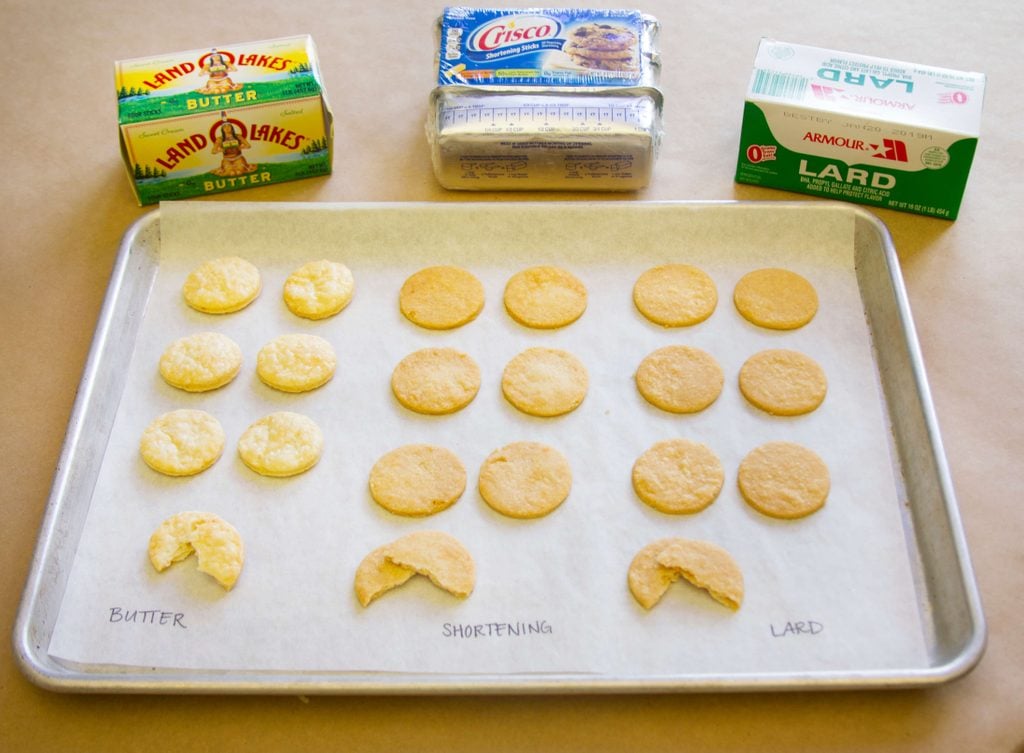
The perfect pie starts with a great pie crust. So what's the best choice for your pie crust recipe: butter, shortening or lard? We put all three to the test.
While it’s almost impossible to get a group of people to agree on the best kind of pie—whether it’s apple or pumpkin or French silk—we think everyone can admit that every pie needs a good, flaky crust that also provides an extra layer of flavor.
However, there still seems to be a lot of debate about how to get that perfect crust. Some people think butter is the key, while others swear by shortening or lard. To put this debate to rest, we gathered up a few foodies for a blind taste test of these three crust options.
Butter vs. Shortening vs. Lard: Pie Crust Taste Test
To make it a fair comparison, we had our Test Kitchen team mix up three crusts using the same recipe, just switching up the fats: butter, lard and shortening. After testing, we identified the pros and cons of each.
#3 Shortening
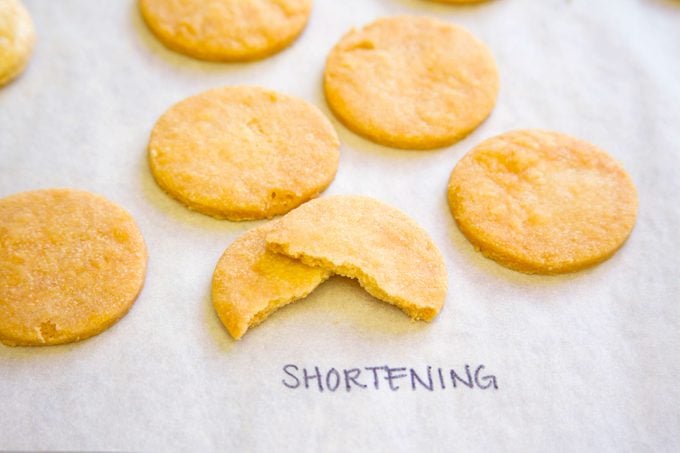
Average score: 2.5/10
“How disappointing!”
Of our three options, shortening got the lowest marks. Looking at the array of mini crusts, we could see that this one baked up the darkest and didn’t have much rise. In and of itself, this didn’t give us too much cause for alarm.
However, as we dug into the incredibly crumbly crust, we began to feel a little worried. Breaking our pie wafers in half was impossible—they just fell into a bunch of smaller pieces. This made us wonder if a shortening crust could hold up to the weight of heartier fillings. The thought of slicing into our favorite pies and having them fall apart in the pan definitely had us a little stressed.
Would the flavor make up for the crumbly texture of this crust? Unfortunately, it did not. We found it to be pretty greasy both in taste and texture (we were definitely cleaning a film off our hands after this test). Flavor-wise, the shortening didn’t wow us, either. It was relatively flavorless, giving us a flat, gritty, bland crust.
Cons of Shortening Pie Crust:
- Shortening pie crust doesn’t rise very much—which means you won’t get to enjoy the flaky layers you expect in a great pie crust.
- The crust crumbles too easily and won’t support hearty pie fillings well.
- This crust turned out to be super greasy and didn’t have much flavor.
#2 Lard
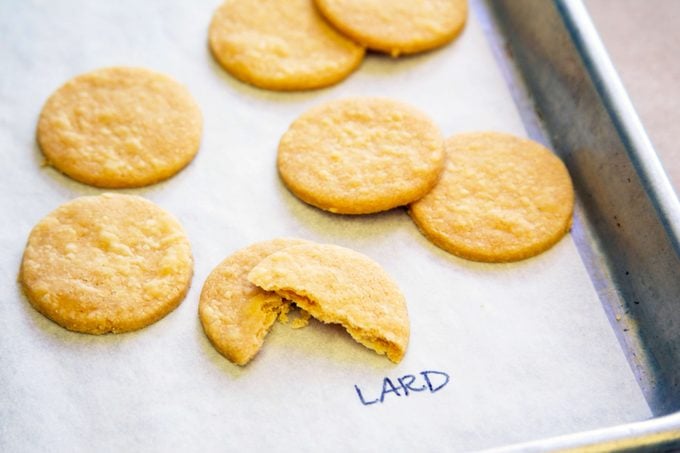
Average score: 3/10
“I feel like this would just fall apart.”
Ranking not much higher than shortening was our lard crust. In many ways, this crust was quite similar to the shortening version. Both lard and shortening are 100 percent fat, so it makes sense that they’d behave very similarly. (In comparison, butter is roughly 85 percent fat and 15 percent water.)
Similar to the shortening crust, the lard also produced a flat, crumbly pastry with noticeable greasiness. This one fared slightly better in the test because the lard provided more flavor than the shortening, with just a hint more richness. Still, we were unimpressed by the old-fashioned ingredient’s performance.
Pros of Lard Pie Crust:
- Lard pie crust is a little bit more flavorful than pie crust made with shortening.
Cons of Lard Pie Crust:
- Like shortening, lard pie crust is greasy and crumbly.
#1 Butter
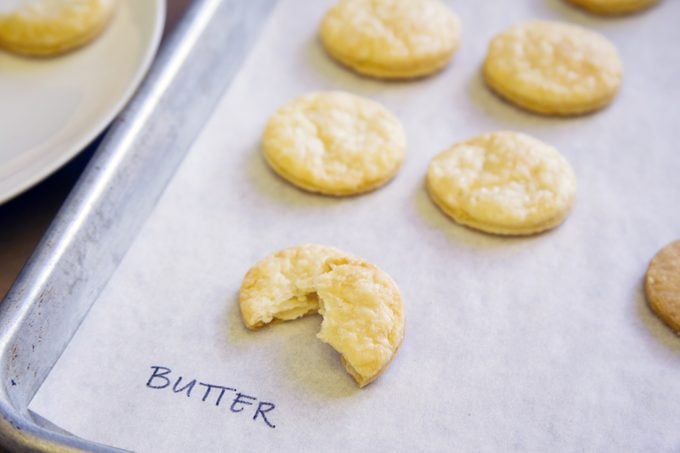
Average score: 9/10
“This tastes like home.”
Knocking it out of the park with a near-perfect score was our butter crust. Judging by appearance alone, this one was a definite standout. The mini crusts had a lot of rise, were a light golden color and, when broken in half, revealed lots of gorgeous, flaky layers.
Taking a taste, we were all impressed. This crust gave us the rich, buttery flavor we had been seeking. We agreed that we could definitely eat these little discs plain (though one clever tester grabbed a jar of jam for a little extra oomph).
After munching through our fair share of buttery wafers, we also made note of how much body this crust had. It was airy and light, but never crumbled to pieces the way the shortening and lard crusts had. We finally found the perfect base for our favorite pies. We’re certain this sturdy, delicious rendition would keep all our favorite fillings in place.
Pros of Butter Pie Crust:
- Butter pie crust has the most flavor out of the three fats.
- This pie crust bakes up nice and golden brown, with plenty of flaky layers.
- Butter pie crust is the most sturdy and will support the weight of your favorite pie fillings.
Cons of Butter Pie Crust:
- This pie crust dough can be a little more difficult to make, because the cold butter takes a little extra effort to work into the flour than shortening or lard. But we think it’s worth the extra elbow grease!
The Pie Crust Takeaways
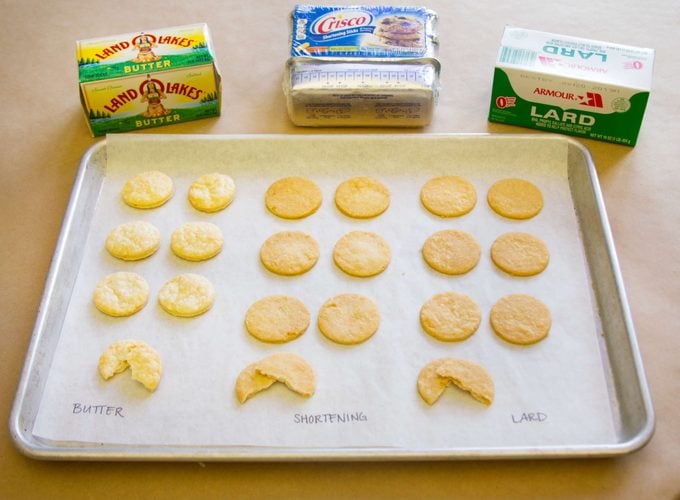
When it comes to our blind taste tests, we usually find it’s a close race between a few contenders. This time, though, there was one very clear victor. Butter made a tastier, flakier, sturdier crust by far.
This isn’t to say that shortening and lard aren’t useful ingredients. Shortening is a great way to get incredibly tender desserts. It’s part of what makes these pumpkin whoopie pies so delectable. In pie crust, though, they both gave us a gritty, crumbly product that couldn’t compete with the yummy, flaky perfection of butter.
If you do choose to use butter in your pie crusts, then make sure you know the best butter brands that will make it even better, and know whether to use salted vs. unsalted butter. Or, take it to the next level by learning how to make butter from scratch.
While we definitely prefer to use butter in our pie crust recipes, feel free to conduct your own taste test by following our guide on how to make pie crust, simply swapping in the fat of your choice. If you want to go beyond butter, lard and shortening, you can even make an oil pie crust. Or, if you don’t have time to make homemade pie crust at all, here are the best store-bought pie crust brands.
